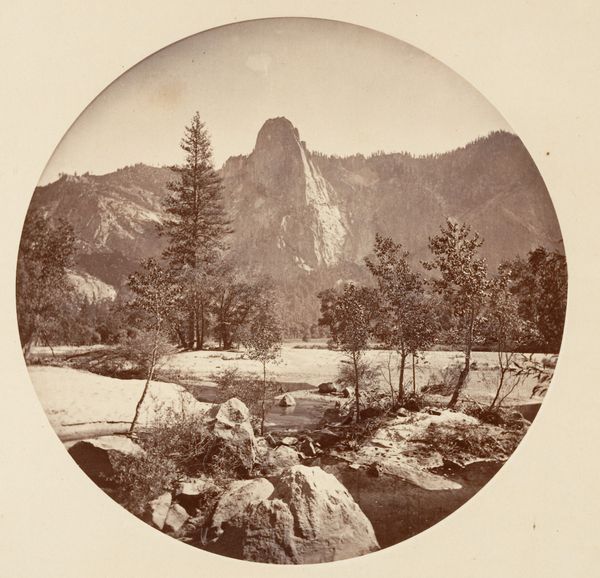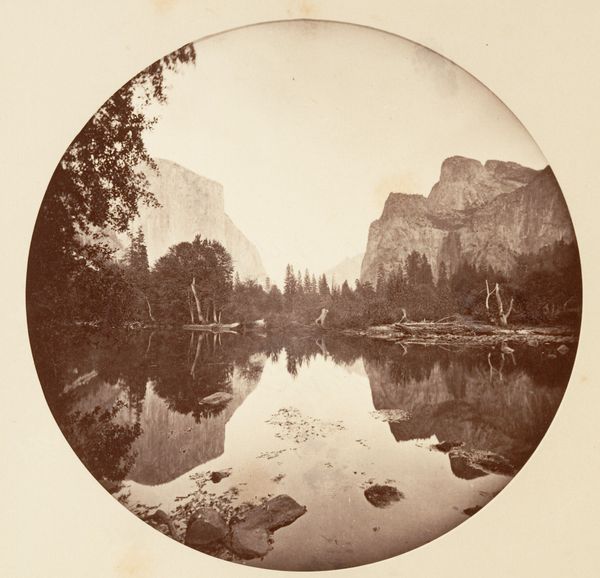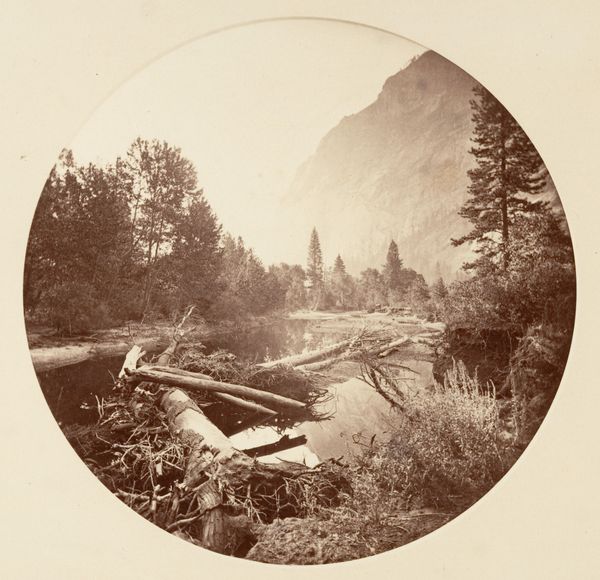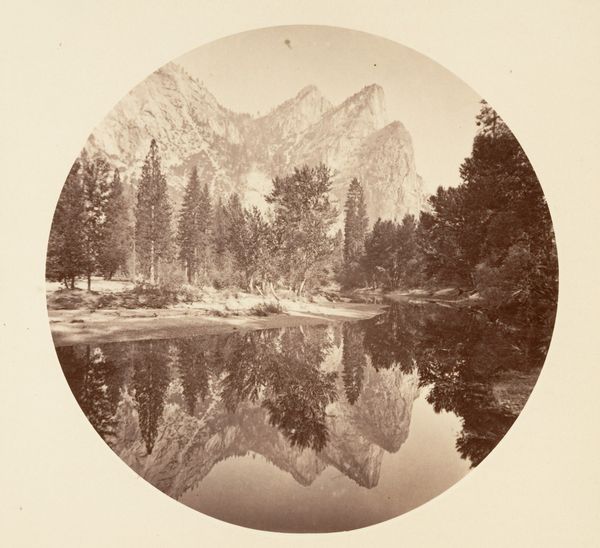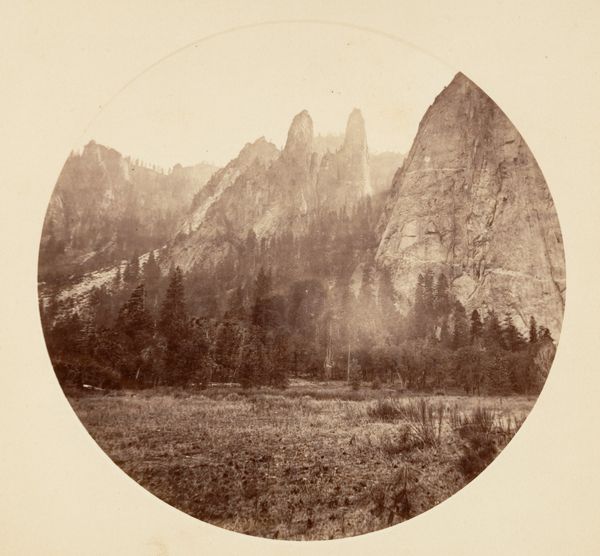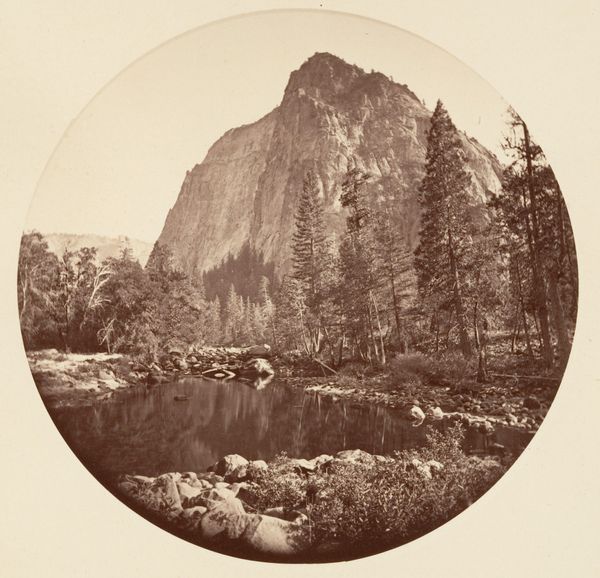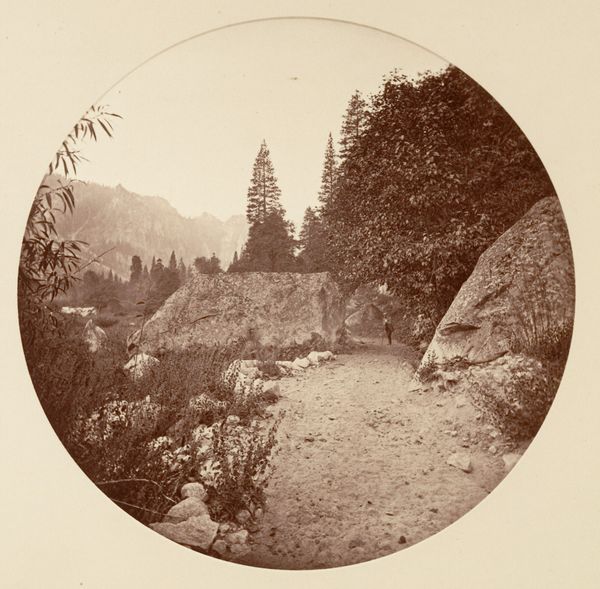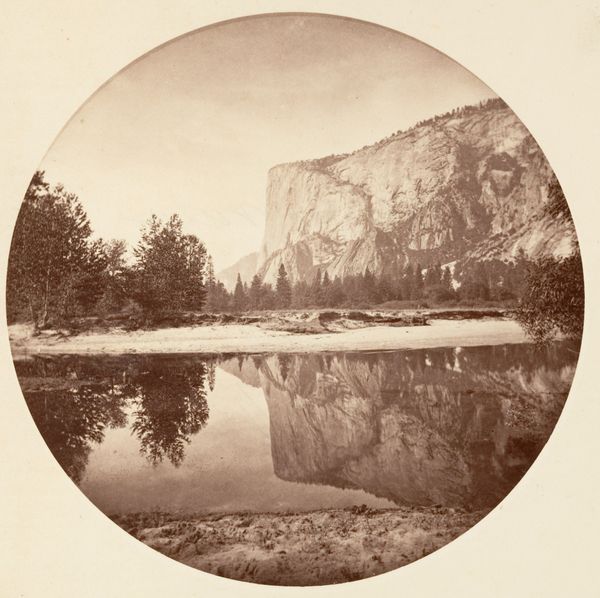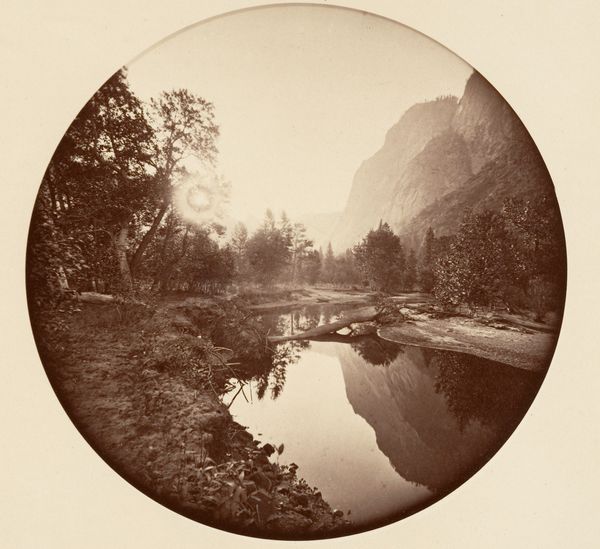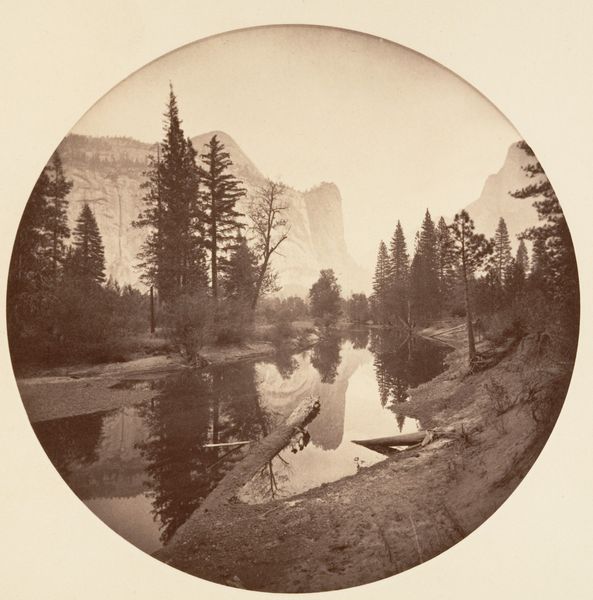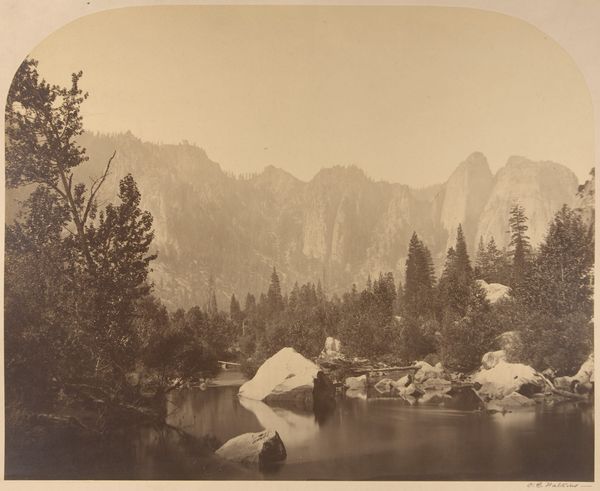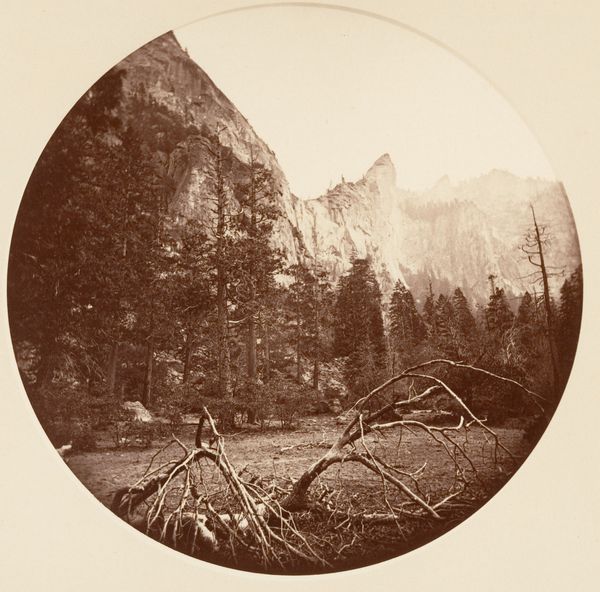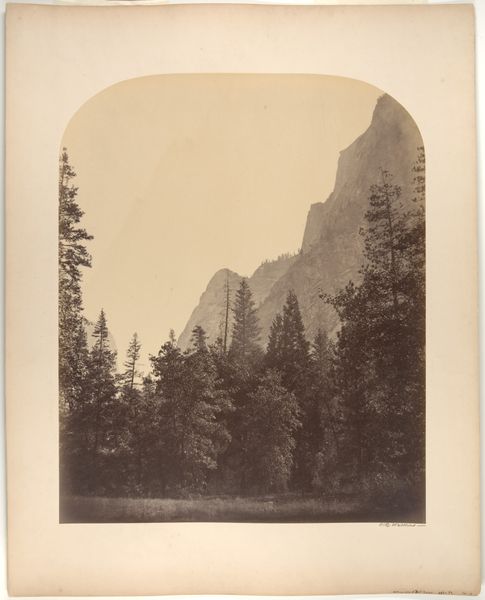![[Yosemite National Park, California] by Carleton E. Watkins](/_next/image?url=https%3A%2F%2Fd2w8kbdekdi1gv.cloudfront.net%2FeyJidWNrZXQiOiAiYXJ0ZXJhLWltYWdlcy1idWNrZXQiLCAia2V5IjogImFydHdvcmtzL2YwNjExN2JlLTBjZTEtNDM4My04NGRiLTE3NTU1MGJkNjc3YS9mMDYxMTdiZS0wY2UxLTQzODMtODRkYi0xNzU1NTBiZDY3N2FfZnVsbC5qcGciLCAiZWRpdHMiOiB7InJlc2l6ZSI6IHsid2lkdGgiOiAxOTIwLCAiaGVpZ2h0IjogMTkyMCwgImZpdCI6ICJpbnNpZGUifX19&w=3840&q=75)
Dimensions: Image: 12.5 x 12.5 cm (4 15/16 x 4 15/16 in.), circular Album page: 24 x 25.1 cm (9 7/16 x 9 7/8 in.)
Copyright: Public Domain
Editor: This albumen print by Carleton Watkins, titled *Yosemite National Park, California,* captured sometime between 1876 and 1880, is breathtaking. I’m struck by how the seemingly untouched landscape exudes both power and tranquility. What draws your eye when you look at this photograph? Curator: It whispers to me of stillness, yet pulses with the unseen energy of the Earth. Watkins, with his large-format camera, not only documented the sublime scale of Yosemite, but, in a way, he pioneered its myth. This photo reminds me of gazing into a crystal ball... Can you sense that feeling as well? What story do you think he’s trying to tell? Editor: It definitely feels monumental and carefully composed, aiming to show the grandeur of nature. It almost romanticizes it. It's interesting you mention "myth." How does it fit the context of the Hudson River School movement? Curator: Exactly. There is such romantic vision! Well, think about the period, right? The rapid industrialization... These artists and photographers were looking for solace and spiritual renewal in nature. They emphasized the divine beauty of the American landscape, turning it into something almost sacred, and in doing so were pushing back on urban realities. Do you think this work evokes a sense of national identity, or perhaps a concern about preservation? Editor: That's an interesting point, because on one hand the untouched quality communicates national pride in this majestic land. Yet on the other hand, documenting it implies an awareness of the potential threat it faces, prompting viewers to cherish and preserve it. Curator: You’ve really hit the nail on the head! Looking at this now, after all the environmental shifts, I think there's another dimension as well, maybe a bittersweet note of what’s been lost and an urgency of what’s at stake for future generations. It really pushes Watkins work outside of only celebrating divine American landscape. What do you think about that now? Editor: It completely changes how I see this picture! Now, the composition does read as a record or even an invitation to think about our relationship with nature today.
Comments
No comments
Be the first to comment and join the conversation on the ultimate creative platform.
